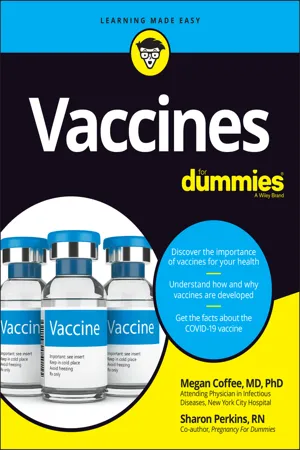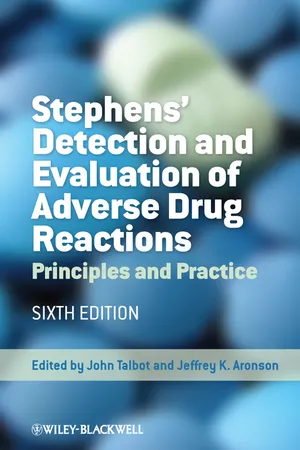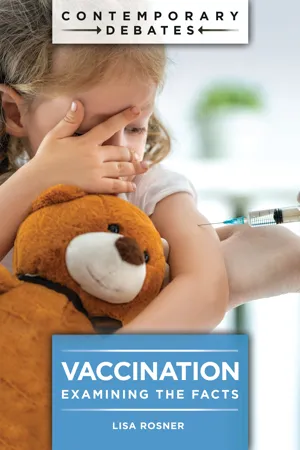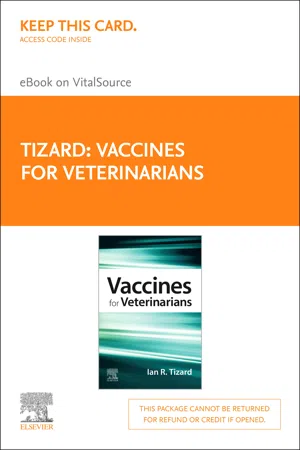Biological Sciences
Side Effects of Vaccines
Side effects of vaccines refer to the potential adverse reactions that can occur after receiving a vaccination. These can range from mild symptoms such as soreness at the injection site to more serious reactions, although severe side effects are rare. It's important to weigh the risks of potential side effects against the benefits of vaccination in preventing serious diseases.
Written by Perlego with AI-assistance
Related key terms
Related key terms
1 of 4
Related key terms
1 of 3
5 Key excerpts on "Side Effects of Vaccines"
- eBook - ePub
- Megan Coffee, Sharon Perkins(Authors)
- 2021(Publication Date)
- For Dummies(Publisher)
While vaccine side effects do occur, they’re mostly more of a nuisance than a serious problem. Some side effects are common. Others are less common and specific to certain vaccines. Rarely, some side effects can pose a serious health risk. In this chapter, you get the scoop on common side effects, serious reactions, and the effect of many vaccines on the immune system.Sometimes what seems like a side effect is actually just an unrelated health problem. Vaccines protect us from specific diseases but don’t protect us from everything out there. We can still have new health problems. This is especially true when vaccinating those who are elderly or very young as well as those with weakened immune systems. Sometimes we can just have bad luck after being vaccinated. In one of the COVID-19 vaccine trials, one adverse event that occurred after vaccination was that someone was hit by lightning. No one thinks the vaccine caused that.Understanding Side Effects: What May Cause Them and What Happens
Over 1 billion vaccines are given worldwide each year. For most people, the side effects are minimal and the benefits have been life-saving. But sometimes your immune system reacts when it sees something new, and this reaction can cause you to have side effects. In some cases, this is a good thing; it shows your immune system is working well.You should react in some way to a foreign object in your body. In the same way that your skin might turn red or irritated around a splinter, your arm can react to an injection with common symptoms, such as redness or swelling. Some of the materials in vaccines can cause temporary irritation. The actual vaccine material itself can cause your immune system to react with more systemic, or body-wide, symptoms. The following sections give you the basics on vaccine side effects. - eBook - ePub
Stephens' Detection and Evaluation of Adverse Drug Reactions
Principles and Practice
- John Talbot, Jeffrey K. Aronson, John Talbot, Jeffrey K. Aronson(Authors)
- 2011(Publication Date)
- Wiley-Blackwell(Publisher)
Here we review the pathogenesis of adverse reactions to vaccines and the methods available for the detection and investigation of safety concerns. However, in order to make an informed decision about the benefit-harm profile of an immunization programme, information on the efficacy of a vaccine and its impact in reducing the burden of disease at the population level is required. Hence, it is essential that the national systems responsible for safety surveillance are accompanied by equally robust systems for surveillance of vaccine-preventable infections.13.3 Pathogenesis of vaccine reactions 13.3.1 Direct effectsAs with any pharmaceutical product, adverse reactions from a vaccine may arise as a result of an adverse effect of any of its components. With inactivated bacterial vaccines, the inclusion of endotoxins or exotoxins can result in a local inflammatory reaction at the injection site or a systemic effect such as fever. A typical example of an endotoxin-mediated adverse effect is that seen with whole pertussis vaccines [4]. Exotoxin-mediated effects are exemplified by anthrax vaccine, which consists of a cell-free filtrate of Bacillus anthracis , containing various amounts of poorly characterized exotoxins, which produce characteristic effects in animal models [5]. Such toxin-mediated effects, usually occur within 24 hours of immunization and resolve within a day or two. The effect of subsequent doses is difficult to predict; for example, endotoxin-mediated adverse effects often increase with age. On the other hand, generation of antibody responses to vaccine toxins may result in reduced reactogenicity with subsequent doses.With live vaccines, adverse reactions can result from replication of the attenuated vaccine strain, the clinical picture resembling, albeit in a milder form, that seen with the wild infection. For example, attenuated measles vaccine produces a mild fever in about a quarter of children at around 7–12 days after immunization, caused by the viraemia that occurs when vaccine virus replicates in the body [6]. As expected, such effects are smaller with subsequent doses, as the induction of immunity prevents viral replication. On rare occasions, the direct pathological effect of a live viral vaccine may be severe, as with the aseptic meningitis seen with some mumps vaccine strains (for example Urabe); identification of vaccine virus in the cerebrospinal fluid (CSF) [7], together with a statistically significantly increased risk of aseptic meningitis in the immediate post-vaccination period [8], have confirmed a causal relation to immunization. Other examples of serious reactions that are directly attributable to the pathogenic effects of the live organisms in a vaccine are acute flaccid paralysis from oral poliomyelitis vaccine (OPV) and the disseminated infection seen in immunocompromised individuals given bacille Calmette–Guérin (BCG) vaccine. - eBook - ePub
Vaccination
Examining the Facts
- Lisa Rosner(Author)
- 2022(Publication Date)
- ABC-CLIO(Publisher)
Although she was an experienced nurse researcher herself, Choi noted that “on a personal level I did not get the message that I should anticipate” side effects. She was reassured to learn that other participants of the trials had experienced side effects, and as she later found out, most people’s side effects had been much milder than her own. She recommended that all health professionals be honest with their patients about the possibility of side effects (Choi, 2020). Although telling patients what to expect does not keep the side effects from happening, it does let them know that though uncomfortable, they are a by-product of the natural functioning of the immune system. These conversations increase patient confidence that their immune systems, the vaccine, and health care professionals are all doing their jobs to protect their health.FURTHER READINGCenters for Disease Control and Prevention. 2021. “Allergic Reactions Including Anaphylaxis after Receipt of the First Dose of Pfizer-BioNTech COVID-19 Vaccine—United States, December 14–23, 2020.” Morbidity and Mortality Weekly Report (MMWR). https://www.cdc.gov/mmwr/volumes/70/wr/mm7002e1.htm .Centers for Disease Control and Prevention. n.d. “Local Reactions, Systemic Reactions, Adverse Events, and Serious Adverse Events: Moderna COVID-19 Vaccine.” Accessed February 11, 2021. https://www.cdc.gov/vaccines/covid-19/info-by-product/moderna/reactogenicity.html .Choi, Kristen. 2020. “A Nursing Researcher’s Experience in a COVID-19 Vaccine Trial.” JAMA Internal Medicine 181 (2): 157–58. doi:10.1001/jamainternmed.2020.7087.Government of Western Australia Department of Health. n.d. “Comparisons of the Effects of Diseases and the Side Effects of Vaccines.” Accessed February 11, 2021. https://ww2.health.wa.gov.au/Articles/A_E/Comparisons-of-the-effects-of-diseases-and-the-side-effects-of-vaccines .Lewis, Ricki. 2020. “Dr. Paul Offit Talks COVID Vaccines, with JAMA’S Howard Bauchner.” DNA Science. https://dnascience.plos.org/2020/12/03/dr-paul-offit-talks-covid-vaccines-with-jamas-howard-bauchner/ .Q4. CAN VACCINES BE PRODUCED FOR ALL DISEASES?Answer: - eBook - ePub
- Barry R. Bloom, Paul-Henri Lambert(Authors)
- 2016(Publication Date)
- Academic Press(Publisher)
Also, vaccines are endorsed or required by most governments, further raising safety expectations. Although no biologic or medical intervention is perfectly safe, vaccines are generally very safe and the risks of side effects are almost always greatly outweighed by the benefits derived from vaccination to prevent disease. Vaccine safety is evaluated at all stages in the development of vaccines, including after the vaccines have been approved by regulatory authorities and introduced into widespread use (Fig. 8.1). 1, 2 Figure 8.1 Vaccine safety activities throughout the product life cycle. 2 (Adapted from a Comprehensive Review of Federal Vaccine Safety Programs and Public Health Activities. http://archive.hhs.gov/nvpo/nvac/documents/vaccine-safety-review.pdf) 2. Vaccine development Safety is important in determining the type of vaccine to be developed, the selection of antigens, and all other ingredients in the final product. For example, recombinant hepatitis B vaccines replaced plasma-derived vaccines to avoid theoretical concerns about adventitious agents in blood. For some diseases, such as Ebola and HIV, live attenuated strains of the naturally occurring viruses are not used due to theoretical concerns the vaccine could cause disease. Vaccine ingredients are carefully scrutinized for real or potential risks from adventitious agents and the potential to cause adverse events. Regulatory authorities require manufacturers to assure safety, purity, and potency of all vaccine products. 3 Prior to testing experimental vaccines in humans, products are characterized by physical, chemical, and biological methods. Animal studies are conducted to identify potential toxicities. Novel adjuvants usually require more extensive safety testing in animal studies prior to obtaining approval for human studies - eBook - ePub
- Ian R. Tizard(Author)
- 2019(Publication Date)
- Elsevier(Publisher)
Chapter 10Adverse consequences of vaccination
Outline- Adverse Events
- Hypersensitivity Responses
- Residual Virulence
- Other Issues
- Errors in Manufacture and Administration
- Human Illness
- Reporting
Vaccination is the only safe, reliable, and effective way of protecting animals against the major infectious diseases. Society does not remember the devastating toll taken by infectious diseases before the development of modern vaccines. Exaggerated fear of negative side effects has discouraged owners from having their pets (and themselves) from being vaccinated. The rise of the Internet and the development of social media have enabled those who oppose vaccination to spread their opinions. Those who resist vaccination for themselves or their children are unlikely to be enthusiastic about vaccinating their pets. Much of this resistance is a result of adverse events and controversy regarding effectiveness associated with the earliest vaccines. In spite of the fact that these problems have long been solved, it takes a considerable time before confidence is restored. There is a lack of awareness of the rigorous safety tests that modern vaccines must undergo before they are marketed. Good manufacturing practices and the quality control procedures used by the biologics industry, together with rigorous regulatory controls, serve to minimize the occurrence of these events. Past issues have been corrected and vaccine safety has steadily improved. Modern vaccines are safe to use and overwhelmingly beneficial. Adverse events associated with vaccination that might compromise the health of an animal are usually rare, mild, and transient. Hypothetical, speculative, or historical adverse effects sometimes dominate perceptions. Nevertheless, it has been truly said, “The most dangerous vaccine is the one not given.” In reading this chapter the reader should be aware that the events described here are rare, somewhat historical, and relatively unimportant when compared with the benefits of vaccination.
Index pages curate the most relevant extracts from our library of academic textbooks. They’ve been created using an in-house natural language model (NLM), each adding context and meaning to key research topics.
Explore more topic indexes
Explore more topic indexes
1 of 6
Explore more topic indexes
1 of 4




